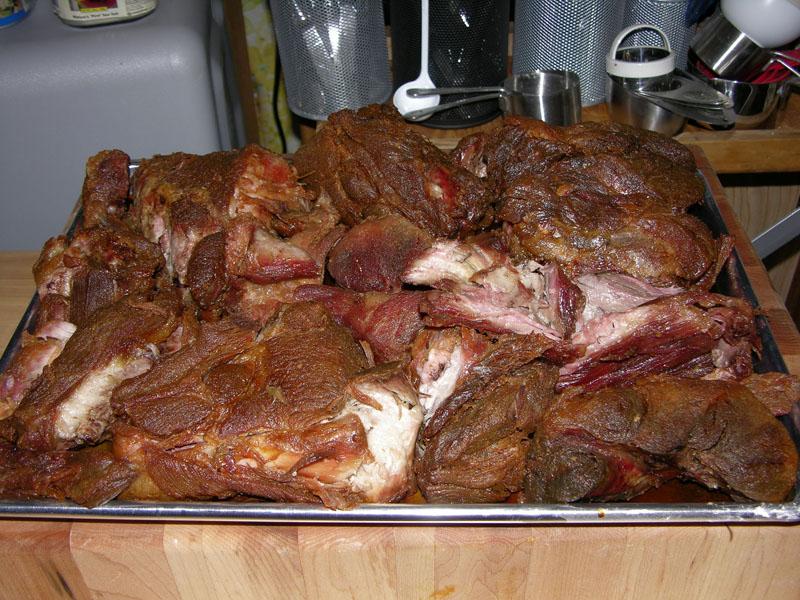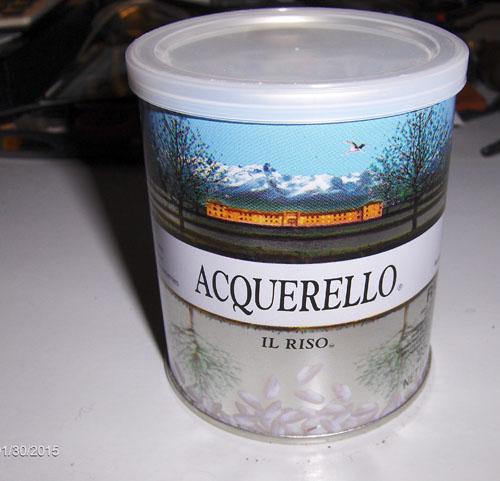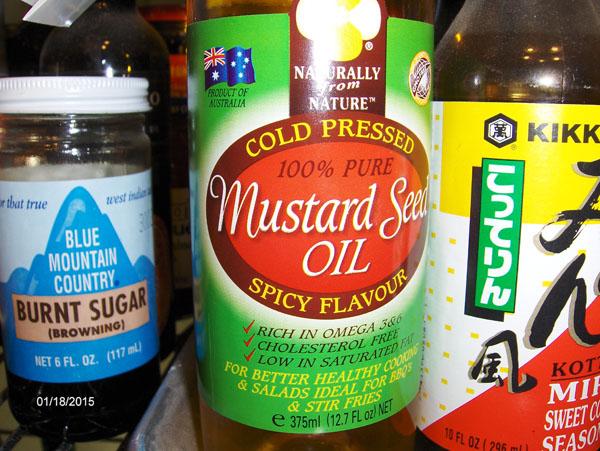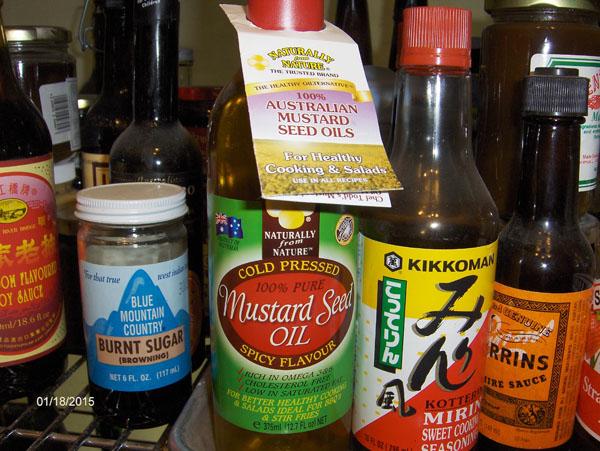-
Posts
11,033 -
Joined
-
Last visited
Content Type
Profiles
Forums
Store
Help Articles
Everything posted by andiesenji
-
All my canning stuff is stored away where I can't get at it without a lot of effort so I can't offer a photo. I have two of these that I used to use for this purpose - baked custards, etc., To lift the entire rack I took a pair of long-handled "barbecue" tongs, turned up the ends OUTWARD so they were like "hooks" - the spring keeps them firmly against the wire - and using two hands could easily pick up and transfer the rack with its contents to a flat surface. Mine are slightly different because they are an older model but the way it is made is essentially the same - the silicone "bars" are black instead of red but each holds 5 ramekins OR will hold a larger round or oval baking dish or even (many times) a springform pan holding a cheesecake. So this option is versatile.
-
Just vacuum seal it and store at room temp. This is the recommendation from the folks who list criteria for long-term storage of staples. "Rice and grains without high fat content should be stored in an air-tight container at room temp. Whole grains and seeds with high fat content, barley, rye, wheat, corn, etc., should be stored in freezer in air-tight containers to retard spoilage/rancidity."
-
Essentially I start out with the same process as when I prepare carnitas. I braise pork butt or shoulder or fresh leg of pork (aka fresh ham) so much of the fat renders out and that is set aside for other uses - for me it is never a waste. I cook it bone in as in my opinion the bone adds flavor to the meat. I have made chile verde stew with wild boar or javelina (given to me by my Mexican neighbors) that required extended braising to reach the desired degree of tenderness - but it had exceptional flavor. The cooked pork is then added to the green sauce and the two are "stewed" long enough for everything to heat through and the flavors to "meld" and this is to taste. When it tastes right to you, it is done. And in fact, I believe that holding it over to the next day and reheating greatly improves the flavor. This is a photo of the cooked meat from the hind leg of a wild boar. Definitely not "the other white meat"
-
This is the brand of carnaroli "extra" I currently have on hand - the expiration date is 2018 and it states it is aged one year.
-
I stopped using arborio some years ago. I found that carnaroli is much better. It was recommended to me by the folks at an Italian market who claimed it was far superior to arborio - they carry it in bulk, but as it is quite a distance from me, I now order from Amazon. The stuff I have now comes in cans so is very shelf stable for a long time. The texture is much superior to arborio, is very creamy - it is more expensive but not that much to make it prohibitive. I have also used and have a supply of vialone nano, sent to me by a friend after a discussion about risotto on facebook.
-
The way it is made, if you have a slab of wood, you could use two "U" pipe clamps and screw it down to the board. That is what I would do.
-
The only place I can remember having a great meal in all of Utah was George's Corner cafe in St. George. I think we were on our way to or from a dog show - there were six or seven of us and they did not bat an eye when we walked in, just hustled a couple of tables together and produced great service and excellent food. It wasn't cheap but the portions were so generous it was worth it. I had a burrito - could only consume about half and the rest was packed to go and they added small containers of salsa and sour cream - which I did not discover until later. They also filled water bottles and a thermos of coffee for a couple in our group.
-
It's similar to the Nemco one I have, except mine has a larger "foot" with holes for bolting it to a table - or in my case I used a slab of butcher block that I fastened to a cart with retractible wheels so it would stay in one spot. The blade plates can be replaced or interchanged.
-
If there is ANY moisture in or on the surface and subsurface of the chicken, it WILL SPATTER. As it frys, the increase in temperature causes small bubbles in the skin to burst and the moisture contained withing causes what is essentially a small explosion in the oil - spattering is the result.
-
The "green" olive oil at the middle eastern store is Lebanese and is only available in 2-kilo tins - they sell it to people who bring their own bottles. It is very rich and "buttery" with a slightly bitter undertone that to me is quite pleasant. I haven't bought any of the oil yet because I have a lot I need to use up before I buy more. (one of the owners is Lebanese)
-
I like to add some spicy (not terribly hot) roasted pepper to hummus. The local deli at the middle eastern market sells hummus made in house in varieties with harissa, with olive tapenade plopped in the center (my favorite so far) and a "spicy red pepper" hummus that is hotter than I like so I get it "half and half" with equal part plain hummus. They have about 6 varieties - one with an herb mixture that I did not care for but which is very popular. One with "lemon confit" which I think is a puree made from preserved lemons and doused with green olive oil. And I mean the olive oil is really green, murky and herbal.
-
I have three of the Zojirushi water boilers and would not be without them. One in the kitchen that supplies instant hot water for anything. 4.0 liter "Hybrid" One lives in my bathroom for sterilizing toothbrushes and other things that I want scrupulously clean, supplying hot water for a cup of tea when having a soaking bath (it's a long trip to the kitchen) and etc. 3.2 liter And one on the cabinet right here behind my desk for "emergency" cups of tea when I don't feel like trekking out to the kitchen. 2.2 liter I did have an Instant-Hot water dispenser at the kitchen sink but even with the in-line filter it kept silting up and after being spattered with boiling water when it "spit" at me, I had it removed. I can move the Zo around if I want to relocate it.
-
This is my "old standard" Peanut butter cookie recipe. As noted, these are a bit sturdier than regular PB cookies - I developed this recipe so they could be shipped without breaking up into crumbs. I converted it to weight measurements some time ago and can't find the old one with volume measurements. These use less sugar than most recipes and are plenty sweet. Sturdy Peanut Butter Cookies Good for shipping. This recipe makes about 60 cookies depending on size. I aim for 7 cm in diameter. 270 gm butter, unsalted softened (room temp) 130 gm brown sugar 130 gm white sugar 280 gm peanut butter you can use smooth or chunky REGULAR not "natural" (Jif, Skippy or Planters) 1 egg extra large 2 teaspoons vanilla extract Measure the next three ingredients into a separate bowl and whisk to blend. 400 gm flour, all purpose 3/4 teaspoon baking soda (bicarb) 1/2 teaspoon salt Optional: You can add either chopped peanuts or chocolate chips, up to about 180 gm if you wish. Put the softened butter and both sugars in the bowl of a mixer and beat until fluffy. Add the peanut butter and beat until well blended. Add the egg and vanilla extract and beat until blended. Beat in 1/3 of the flour mixture until smooth. Add another third and beat again until the dough appears smooth and creamy. Add the remaining third a little at a time - the dough will begin to pull away from the sides of the bowl. If you are adding chopped peanuts or choc chips, add them now. Cover the bowl and refrigerate for 1 hour. Preheat the oven to 177° C - 350° F. Line baking sheets with parchment paper or if you have Silpat sheets, use those. With a small soup spoon or *disher, form the dough into 2.5 cm balls. I scoop them roughly onto the sheet pans then roll each between my palms to for a ball. Place on the sheet pans about 5 cm apart. Flatten the balls to about 1 cm thick (or a bit less) with a fork dipped in granulated sugar, forming a criss-cross pattern. Bake the cookies for 12 minutes, until they just show a touch of color around the edges. Transfer to a wire rack to cool. I just pull the entire sheet of parchment off the sheet pan, allow the pan to cool and transfer another loaded sheet onto the pan. The cookies will pop right off the parchment when cool and you can use it again, several times. I have a glass with a "hobnail" bottom and I use this to flatten my cookies. It is faster than using a fork but not everyone has one of these. A friend, who makes huge batches of these cookies uses a round potato masher that leaves a waffle pattern on the cookies. I've found this recipe can be doubled or tripled for more cookies, but I make multiple batches rather than one big batch if I need more than four times as many cookies. These cookies hold together when dunked in coffee or cocoa! * A disher is an ice cream scoop, they come in various sizes from very small to very large. You can use different types of flour if you wish. Whole wheat flour - you will have to use less because it absorbs more moisture. Same with oat flour, although this does produce a lovely, tender cookie, not as sturdy as with regular flour. I have not tried it with other flours but have been told that coconut flour will not hold together well using this recipe.
-
I renovated two kitchens - once in the '70s and a different one in 1990. In 1970 we were doing a major redo and an addition, reinforcing foundation and floor to hold a Garland range that weighed nearly a ton. We rented a 26ft trailer and parked it in the driveway - we had a big driveway - and all the cooking was done in there and there was very little angst or problems for my husband or his kids. We did have a big fridge and the freezer in the garage, easily accessible. In 1990, I was living alone and I just put together a makeshift kitchen in the laundry room with the Sharp combo Convection/Microwave oven, a hot plate and whatever small appliance fit the task at hand. The fridge was on the covered deck - it was during the winter so the heat was not a problem. The reno went rapidly because I had purchased EVERYTHING in advance and had it stored in a storage facility so there were no construction delays "waiting for the part to come in" .. 7 weeks, start to finish.
-
There are different ways of tweaking the flavor of butter besides culturing the cream. Adding a pinch of a particular type of cheese, dried and finely grated or ground and allowing it to "bloom" in the cream overnight at room temp, can produce flavors much like some of the European specialty cultured butters. I have used at various times, Romano, Sap Sago, Asiago and even a blue cheese - I cut a thin slice, dried it in the dehydrator and ground it very fine. These are not the same as "composed" butters in which the additions are made after the butter has been churned. Those flavors are much stronger while the flavor of the butter churned with flavored cream is much more subtle.
-
This recipe with spectacular photos of various cookie toppings has been trending on FaceBook yesterday and today. Numerous shares. The direct link to Lavender Shortbread with Fruits, Flowers and Herbs is HERE! I have baked one of the Bon Appetit shortbread recipes in the past with fantastic results.
-
You can add nut oils to chocolate and white chocolate, prior to melting - adding subtle flavors to the chocolate and a bit more pronounced flavor to the white chocolate. Pistachio oil is especially nice with white chocolate and the color produces is quite attractive. Added at the same ratio as butter or with using half the amount of heavy cream - in 70% chocolate, the flavor is less pronounced. The lower the percentage of chocolate liquor, the more the nut flavor comes out. Also, oil added to the chocolate and melted with it, will keep the chocolate from seizing when other alcohol-based flavorings are added.
-
I have grown several varieties - some get very large - one plant that "volunteered" next to the compost pile produced a 2-pound fruit and I have a photo somewhere. These make great container plants - need a deep pot - 5-gallong is optimal and you need at least TWO plants as they are open polinated. I generally grow ten plants as that about covers my needs and allows for extras to trade with neighbors for their produce. The purple variety seem to produce smaller fruits but more of them - they range in color from a reddish purple with green stripes to almost black. As I mentioned earlier, I pick off some of the fruits to encourage the others to grow larger. I "store" them in wire colanders (I have several just for this purpose) and they will keep for weeks, need no refrigeration, no special care but keep them in a dry area. For many years I had neighbors from Mexico who coached me in the way to grow and use these fruits as well as peppers, etc. And in fact my "green sauce" recipe, detailed on my blog, is from them but I have used an oven for roasting, instead of over an open fire on a huge comal. And I used a food processor instead of mortar and pestle.
-
As soon as they are the size of large marbles and the skin is opaque, they can be used. I generally pick them when the fruits almost fill the outer "skin" .
-

Victorian curry recipe. We have come a long way.
andiesenji replied to a topic in Food Traditions & Culture
Me too. My great grandmother and grandfather had both spent time in India in the late 1800s and she was an avid collector of "receipts" wherever she traveled and while she never cooked herself, she was adept at instructing others how to achieve a particular result. We did not have mangos in western Kentucky in the 1940s but we had apples and peaches, both of which went into curries and chutneys. Spices were purchased whole and ground - some had to be specially ordered. Coconuts were grated and some of the meat was dried and was later made into coconut milk for cooking certain recipes. My grandpa's cook was a lowcountry Gullah woman and often used coconut in stews that I think were based on West Indian foods. I do know that we ate a lot of foods that were odd and mysterious to the neighboring folks. Often these dishes were refused by visitors because they had never heard of them... I believe that is why I have always been a culinary adventurer - I loved almost everything, the more exotic the better. -
Senape is the ITALIAN word for mustard. Here is a definitive explanation of the spice and its uses.
-
-
I make mostarda - with candied fruits - and I use Naturally from Nature Spicy Mustard Oil that is for CULINARY use. And for uses other than specifically for mostarda - there are suggestions in the little hang tag that comes with each bottle. It is milder and easire to adjust the "bite" of the syrup to the degree one likes. I have used the other stuff in the past and had to discard an entire batch because just a drop too much was WAY too much! It is available from a couple of vendors here in the U.S. The first bottles I ordered came from a vendor in Australia, before it was available here. Honest Foods.com is the vendor I use.
-
Did you "cook" it? "Tempering" the mustard, either on stovetop - I now use the microwave and have for years - is the way to "adjust" the bite to the degree you like. Otherwise it takes several weeks for it to "mellow" and even then will still have harsh notes. That is one of the reasons for using something sweet - even if only a small amount in mustards you don't want to be sweet. It speeds up the process. Whatever kind of mustard you are going for, try a small amount in a cup, heating it in the microwave, as I describe in my process, and see what happens, using short periods and stirring and tasting after each session.






